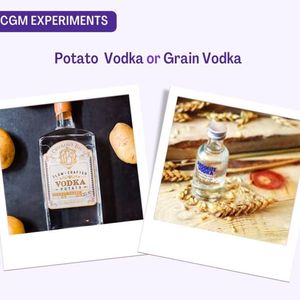

Our Review Process
Our articles undergo extensive medical review by board-certified practitioners to confirm that all factual inferences with respect to medical conditions, symptoms, treatments, and protocols are legitimate, canonical, and adhere to current guidelines and the latest discoveries. Read more.
Our Editorial Team
Shifa Fatima, MSc.
Author
Dr. Apoorva T, MHM.
MEDICAL ADVISOR
Post-Workout Refuelling using CGM
Athletic performance can be maximised in two ways- on-hours performance and off-hour performance. On-hours is the basic training, and off-hours include recovery and preparation. It is crucial to consume a proper amount of proteins and carbs post-workout. The consumption of such food helps recover muscles. Also, it stimulates protein synthesis in muscles and enhances the performance of muscles for the next workout. After a few hours of refuelling with a snack or a meal, it is important to work out.
Table of Contents
On-hours and off-hours workout
Fueling is essential for both on-hours and off-hours training. Altering the amounts of nutrients after a workout profoundly impacts the response to working out and the ability of a body to adapt to it.
On-hours and off-hours training depend on each other. During the workout of high intensity, muscle glycogen and blood sugar oxidation stores are the most important sources of fuel that help sustain exercise and workouts.
Timing of required nutrients post-workout primarily helps restore muscle glycogen, which helps to improve recovery rates. Metabolic health and the uptake of nutrients are interrelated. Post-exercise time is an opportunity to adapt and recover through nutrition. This period after the workout lasts for 45 minutes to 60 minutes when muscles of the body are more sensitive to glucose uptake.
This also helps you to plan your upcoming workouts. Muscle glycogen is also restored in this period through 1-1.5 g/kg carbohydrate intake. It is important to consume carbohydrates after 4 hours to 6 hours of the workout. The re-synthesis of muscle glycogen occurs during this period because of the carbohydrates in the post-workout time.
A shift to an anabolic state from a catabolic state can be noticed during a rapid and strategic intake of carbohydrates. This also ensures quick adaptation and recovery of your body after a workout.
The intake of carbohydrates during an off-hour period can help maintain glucose levels in the body. A fueling approach post workouts can guide glucose levels in the body. Many athletes use this method and maintain their glucose or sugar levels between 90-140 to improve glucose flux in their muscles. You can effectively refuel your body after it cools down post-workout. Making refuelling a part of your post-workout period is better for achieving higher outcomes. There are many ways by which you can make the effective use of fuels in your post-workout routine. These ways are given below:
- You can perform a high-intensity activity and track this event in your exercise app.
- You should start refuelling after 50-60 minutes of your workout. You can pick any energy source, a drink or food item with a high glucose response. You could choose a source that would spike your glucose level from 130 mg/dL to 140 mg/dL on a non-exercising day.
- You should also create an event of food for yourselves. You should add the food item in the event and mention the glucose level before and after having the nutrients.
- You can also analyse the response of glucose in your body. You can compare the steepness in the glucose levels during the post-workout period and on a non-workout day.
- You can also share your observations and learn with other trainers and your friends who workout with you. Inspire, connect, optimise and discuss your events and activity with others for better performance.
Continuous glucose monitoring or CGM is used to see as well as observe the consumption of glucose in the body. You can see how much glucose is consumed by the body before and after the workout. You can also use this method as feedback and workout according to the intensity you need to. This way, you can plan your workout more precisely. A sudden increase in the levels of glucose in CGM might suggest that glycogen stored in the body is being used as fuel. This indicates that you are carbohydrates before your workout. Also read about which fruits are good for diabetes?.
Eating post-workout is important
Metabolic health greatly depends on the right food that you eat after the training. They help in rebuilding the proteins of your muscles. It also leads to the growth of new muscle cells. Some of the best foods to eat post-workout are given below:
Fats, carbs and proteins: These are known as macronutrients. They play a vital role in your body's recovery during the post-workout period. It is important to have a diet that is the right mix of all these nutrients.
Simple and easily-digested food items that contain carbs are sweet potatoes, edamame, whole grain bread, pasta, potatoes, oatmeal, rice, rice cakes, kiwi, banana, berries, and pineapple, grains, quinoa, chocolate milk, etc.
Proteinaceous foods that can be consumed post-workout are tuna, protein bar, chicken, salmon, cottage cheese, greek yoghurt, eggs, plant or animal-based protein powder, etc.
Some food items that are a good source of protein include trail mix, seeds, nut butter, nuts, avocado, etc.
Drink plenty of water
It is crucial to drink plenty of water post-workout. When your body is fully hydrated, it ensures that its internal environment stays optimum. Also, it ensures maximum results post-workout.
During workouts, some water and electrolytes are lost as sweat. It is important to restore all the water levels in your body. Water helps recover the body and improves post-workout performance. It is essential to replenish all the fluids in the body if you have your next workout within 12 hours.
As important as choosing a wise food item to eat before a workout, it is also important to choose a wise item to eat after the workout. When you are working out, glycogen is consumed by muscles, especially during exercises of high intensity. When the workout is finished and the body is cooled down, the muscles try to regrow all the consumed muscle proteins. Consuming the right nutrients after exercise can speed up this process. It is important to eat proteins and carbs after your workout. It also increases the synthesis of muscle protein and improves metabolic health.

Disclaimer
This website's content is provided only for educational reasons and is not meant to be a replacement for professional medical advice. Due to individual differences, the reader should contact their physician to decide whether the material is applicable to their case.






_1lAR9W.png)
_Z12iaBn.png)
